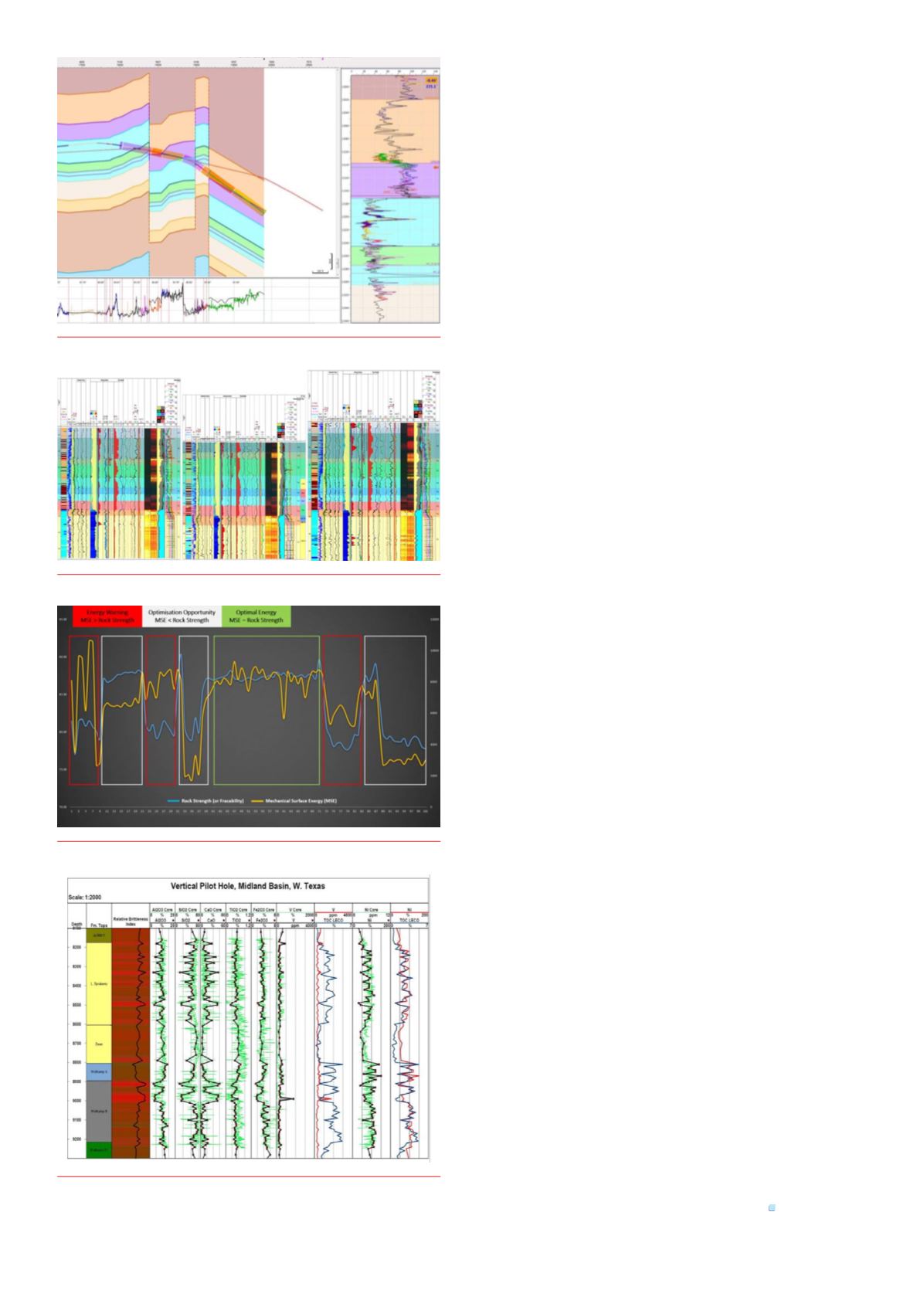
22 |
Oilfield Technology
May/June 2020
Additionally, purposeful gas extraction and detection programmes
help better understand gas oil ratio across the field and between
different producing formations. Applying rigorous QA-QC standards
(gas while drilling [GWD] methodology proposed by Total, Eni and
others in the late 1990s) ensures optimal data quality. Wide spectrum
measurements such as mass spectrometry provides C1 – C10 alkanes,
aromatics and inert gases. Understanding the relative relationship of
alkanes and aromatics provides invaluable insight into water saturations
that can pose a serious risk for optimal completions and production.
DatafeedsAI software
By partnering with Enovate A.I., Diversified Well Logging has been able
to add the important components of machine learning, deep learning
and AI. Taking both a drilling and geologic data driven approach is key
in order to provide success and value to clients. With an augmented
data set drilling inefficiency and associated NPT can also be reduced,
as areas for improving drilling rates can be identified and corrected in
real time (Figure 5).
Using historical production data and information, production
forecasts based on different completion scenarios forecast optimise
completions, production flow rate, decline rate and total cumulative
production. This can be done in near real time. Working with
interdisciplinary teams of geologists, drilling, completion, and reservoir
engineers as well as management, lean solutions can be provided
to improve decision-making at the drill bit, in addition to improving
planning placement, timing and spacing decisions on future wells.
The future is robotic
The company is actively working on bringing ‘robots’ to the oilfield.
Image recognition software can characterise the colour, size, and shape
of drill cuttings, allowing greater precision in gathering important
information used to minimise drilling dysfunction and the possibility of
stuck pipe due to hole instability.
Furthermore, the automated drill cutting collection and analysis
system, the ‘Robologger’, has delivered encouraging initial results. The
system delivers more consistent sample collection 24/7, regardless
of the weather and analysis samples, every 2 minutes, providing
quantitative rock composition at greater depth resolution than a
person can achieve. It lowers health, safety and environmental (HSE)
risk, reduces the carbon footprint and significantly reduces geological,
drilling, and completion risk.
As a ‘robotics as a service’ (RAAS) system, Robologger is designed
to provide a step-change in analysing the subsurface and help guide oil
and gas companies to drill with greater levels of safety and efficiency.
The additional high-resolution geological information delivered will
enhance well productivity and improve critical decision-making for
well placement and spacing (Figure 6).
Conclusion
Historically, reducing geologic uncertainty increased cost
and operational risk through larger and more expensive data
collection programs: programs that only made data available weeks
or months after the well was drilled. Today, to drive capital efficiency,
all but the most basic geological data collection programs have
been cancelled.
However, geological complexity and uncertainty still
exist. Robotics and AI provide new ways to ‘bridge the gap’ of
geological knowledge, building on the surprisingly large and diverse
data sets from surface measurements. Robotics and automation
allow the delivery of geologic certainty on every well and continuously
update models and algorithms to provide the means to decrease risk,
drive efficiency, and shape the future of the industry.
Figure 3.
HML elemental steering identifies fault GR couldmiss.
Figure 4.
Quantitative geological data improveswell towell correlation.
Figure 5.
AI software uses data to optimise drilling efficiency.
Figure 6.
Robologger drill cuttings analysedwith XRF and compared to
aCore LithoScanner.








